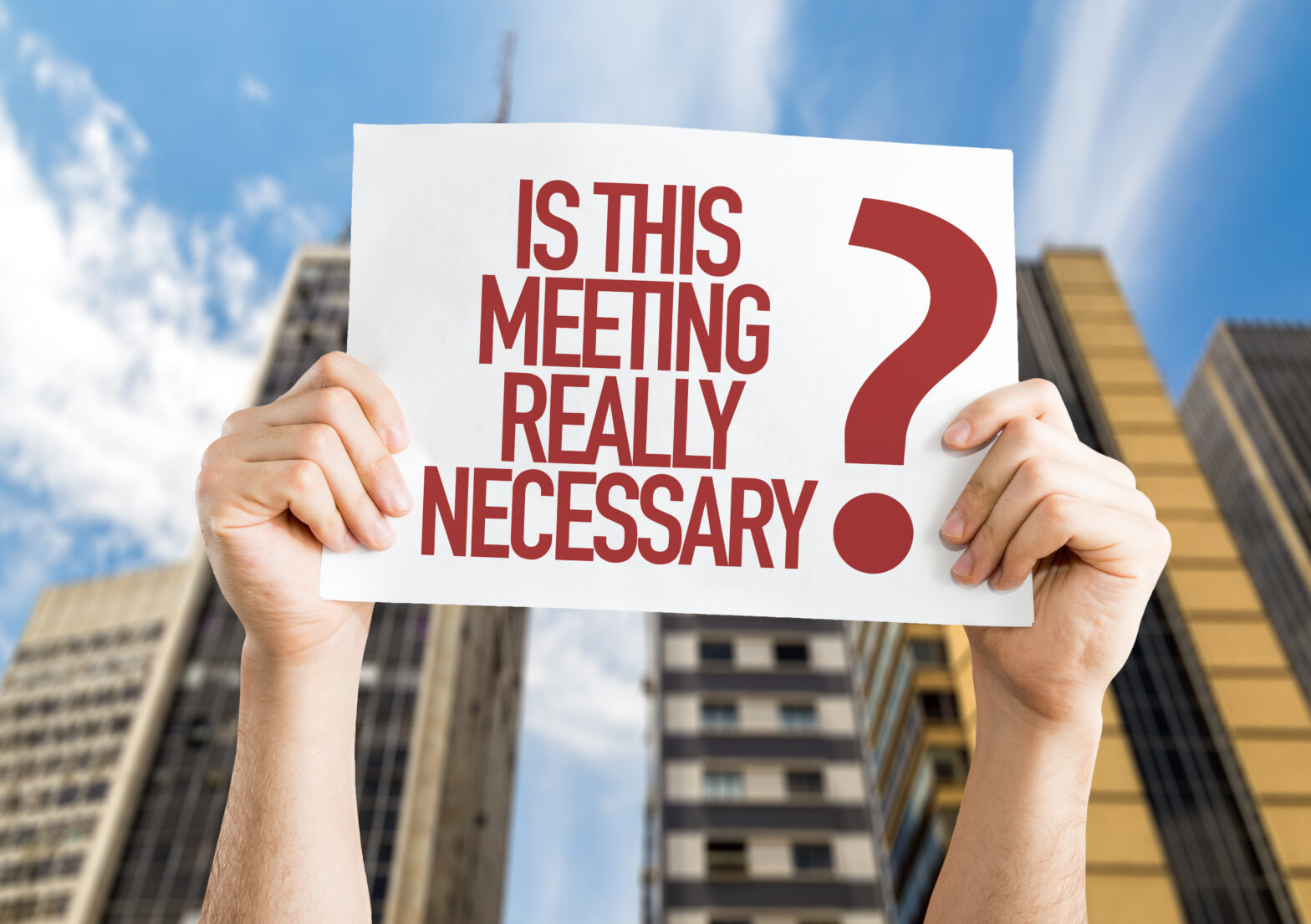As a nation notorious for its “productivity puzzle”, where input and output just haven’t been matching up, why are we spending a good portion of our work day in meetings?
This infographic from SilverDoor highlights ten ways around productivity blockers to help you get the most out of your meetings.

Five things holding your meetings back
According to John Williams, head of marketing at Instant Offices, there are five main reasons why meetings can be counterproductive. Collaboration is crucial to the success of any business and while meetings are an important part of the process, unproductive sessions can actually have a negative effect.
Related: The benefits of versatile meeting spaces
According to a report by WorkFront, meetings are the number one productivity killer in today’s business environment, with busy professionals attending an average of 60 meetings a month. In a survey across the UK, 41 per cent of employees said they feel more stressed after unproductive meetings, while 36 per cent said they feel less motivated. Even more depressing is that SMEs in the UK reportedly spend over 41 hours a year in meetings – almost a full week of work – and waste a potential £637,000 on travelling to meetings every year.
With time being one of the most valuable assets we have, it is worth re-evaluating our meeting habits. Here are five reasons your sessions might not be as productive as they could be, and how to fix them.
- You may be scheduling meetings that interrupt coworkers
Every time someone is interrupted at work it takes a few minutes to return to the original task they were concentrating on – and it all adds up. Rather than scheduling a meeting for any time recipients are free on their calendars, segment the day into blocks of time dedicated to uninterrupted working and time open for meetings – this creates a natural rhythm in the workplace and people know what to expect. Early morning, mid-morning and mid-afternoon are good times to block for uninterrupted work time, during which disruptions should be discouraged unless completely necessary.
- Are you spending 60 minutes on a meeting that could take 10 minutes?
With up to 67 per cent of employees spending up to 4 hours a week preparing for their next status update meeting, it might be time to re-evaluate the way we approach different meetings and their purpose. Instead of a long, formal status meeting once a week, short, daily stand-up meetings can get the job done much faster and more efficiently. A 10 minute recap of yesterday’s work and what’s on the agenda for today will keep team members up to speed, agile and far more efficient. Stand up meetings are for communication, not problem solving, so if larger discussions need to be had, private meetings are a more suitable platform.
- There is no agenda
If you spend more time talking about problems than solutions in a meeting, it might be time to evaluate your staff meeting agenda. Each person attending a meeting should always be sent a brief so that they know what’s happened, and can immediately focus on discussing next steps and solutions when the meeting starts. An agenda will ensure you stick to a plan and all staff should be encouraged to turn down meetings that don’t have a clear agenda or stated purpose.
- Too many people are invited to meetings
Even more risky than inviting too many people to a meeting is inviting team members who really don’t need to be there. Not only is it a waste of their valuable time, but it also means the meeting is unlikely to stay on track. The VP of Business Operations at Google says meetings should ideally consist of no more than 10 people, and that everyone who attends should be able to provide input, and if no input can be provided then they shouldn’t be there. It is also important to remember that attending meetings isn’t a badge of honour.
- There’s little accountability for next steps
How often do meetings end without a conclusion, or with decisions to be made at a later stage? When this happens it’s easy for progress to come to a grinding halt and for no one to take accountability or ownership of next steps. This is why it’s crucial to clearly define the next steps and who is responsible for them before the meeting’s conclusion.
How to have productive meetings
Meetings are indispensable when you don’t want to do anything.’ So said economist John Galbraith and it’s true that meetings (or briefings, seminars or presentations) do have a well-deserved reputation as often being counter-productive and a waste of time. However, when organised and conducted properly they can yield positive progress and results.
There are many reasons why meetings can go wrong: poor planning; not all attendees having their say; the chairman losing control of the meeting; people getting sidetracked onto unhelpful tangents; and frequently, there being no need for the meeting in the first place.
‘Having a clear agenda is the first step to a successful meeting,’ believes Richard Wilson, head of policy at the Institute of Directors. ‘It should include the topics under discussion, the overriding purpose and the start and end times. Print this agenda and distribute it well in advance of the meeting.’
At the meeting itself, it is vital that the chairman (or leader or facilitator) takes control and gets the ball rolling by briefly introducing the topic in hand and, if necessary, the people round the table. On this issue, Wilson advocates each individual introduce themselves to their neighbour who then tells the whole group about them. This acts as an ice-breaker and means that everyone is listening rather than thinking what they will say about themselves.
On the key subject of refreshments, which some say can make or break a meeting, if you are going to provide coffee and biscuits, make sure they are served before the meeting gets going as their introduction can disrupt conversation.
Environment is another important consideration. For example, an overly warm room will have people nodding off around the table, while noisy surroundings may keep people awake but will hamper discussions.
Once underway, the onus is on the chairman to encourage everyone to have their say while keeping to the topic. In the event of anyone starting to dominate the meeting, it is worth tactfully stopping them and allowing others to have their say – for example, ‘thank you for your comments, does anyone else have anything to add on this subject?’
The chairman should also act as timekeeper, moving things along at a reasonable pace and summarising what’s been said on a particular issue in order to move on to the next.
At the end of the meeting, the chairman should sum up what has been decided, what action needs to be taken and who is responsible for it. The minutes, which will have been taken by someone other than the chairman, should reflect this in writing and be distributed to all concerned within 24 hours.
‘A good way of judging the value you are getting,’ concludes Wilson, ‘is to calculate how much you are paying all those attending for their time in the meeting and whether their time could have been better served getting on with their work.’
Related: Ten ways events meetings could change in the next five years







